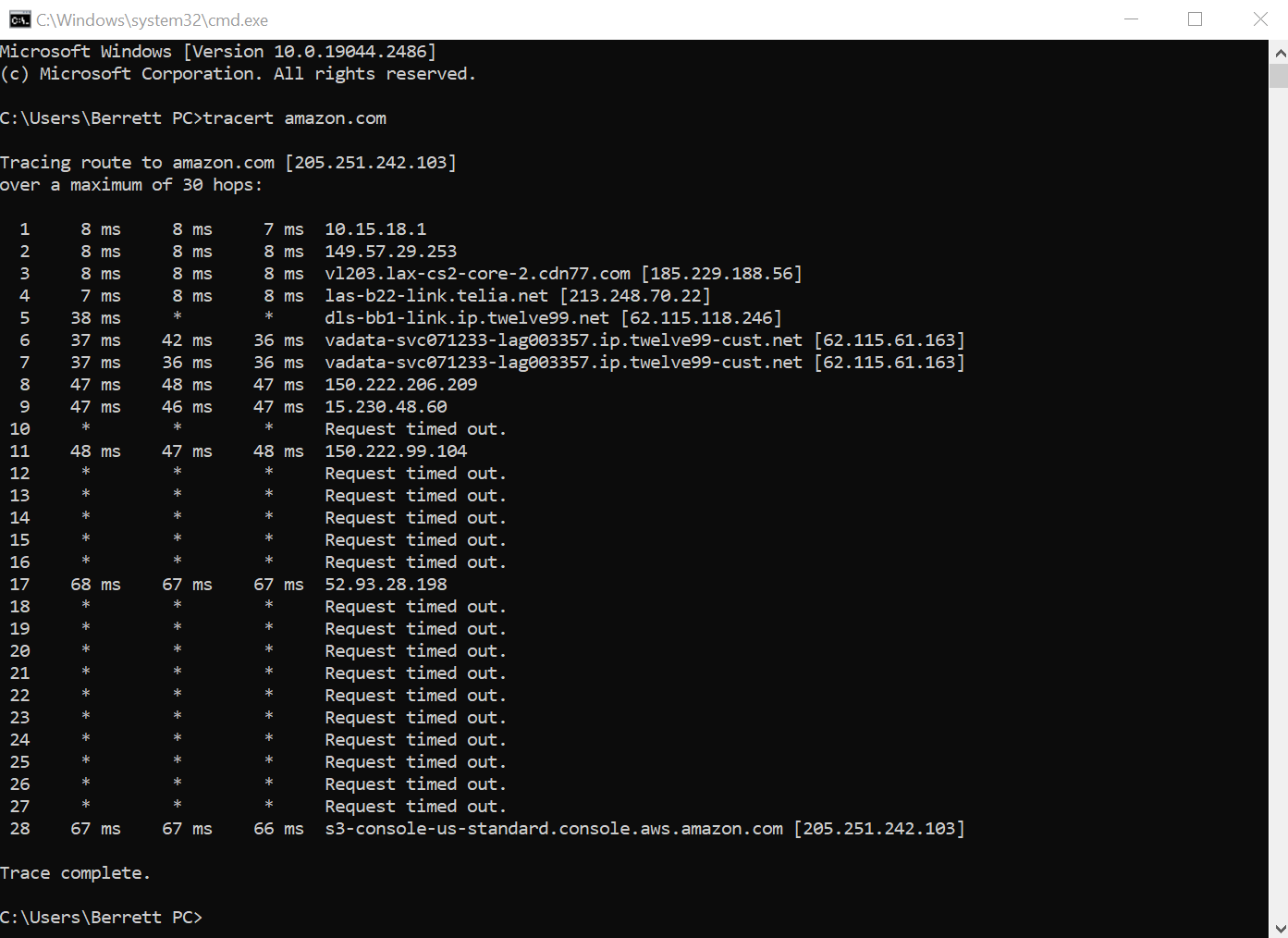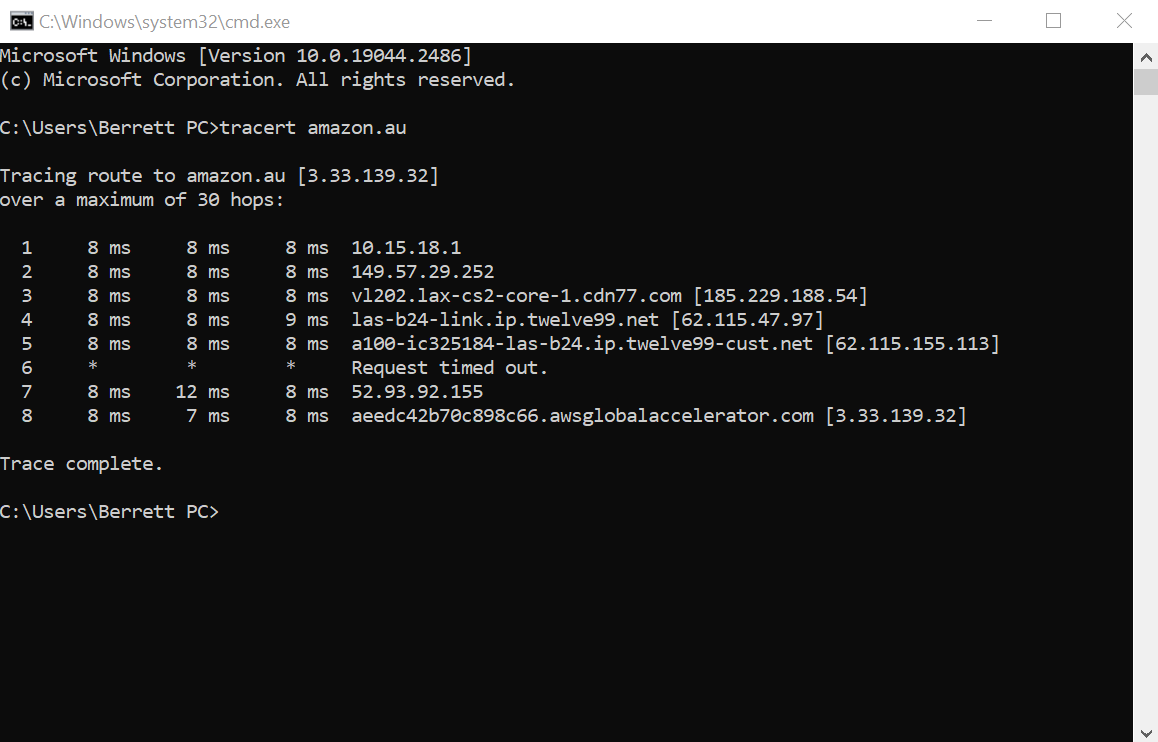Traveling Through a Network
An
interesting experiment is using ping and traceroute commands on your
computer. To use ping or traceroute commands on a windows computer right click the Start menu and click run. Then type cmd into the textbox and click OK. Then in the command prompt, type ping, then space, then the specific domain name or IP address, and press enter. Follow the same steps to perform a traceroute, but instead of typing ping, type traceroute. Using ping and traceroute, you send signals or packets of information from
your computer to websites, other computers, or devices within the network.
After sending the signal through a ping or traceroute, you will be able to see
if the other device or website got the signal, if it was returned, and how long
it took to reach the other device or website. If, when doing a ping for a
device such as a printer in the local network and you receive a “request timed
out” message, this could mean an issue with the printer, such as not being
connected to the internet. If the same message is found using the traceroute
command, but the traceroute still says complete, then the “Hop” or router the
signal was sent to either didn’t send a message back or a firewall is blocking
the request. The reasons why a ping or a traceroute might time out or return
with an error response is either due to a firewall from the other website or
device not allowing access, or the website being pinged is down, or having a
connection problem with the device, website, or on your end.
I
noticed that pinging a website was quick, while a traceroute of the same
website took longer. For each hop, the signal would give the router about 5
seconds to respond, and once those 5 seconds were up, it would mark the “hop”
or router as timed out. Also, I noticed that the .com traceroutes took longer
and had more “hops” than other countries such as .au (Australia) or .jp
(Japan). For instance, tracerouting Amazon.com had 28 hops with 19 timed-out
requests, and Amazon.au had 8 hops with 1 timed-out request. This showed me
there were more routers to go through with the .com websites than the au or jp
websites. Another difference I found was pinging Amazon.com took an average of
72ms while pinging Amazon.au took an average of 8ms, which I think meant more
traffic and people were using the .com than the .au. Below are a few screenshots of the results I got while using ping and traceroute commands.
-Matthew
Ping.com
Traceroute.com
Traceroute.au
References
David,
S. (2021, April 17). Network troubleshooting using Traceroute.
Engineering Education
(EngEd) Program | Section. https://www.section.io/engineering-education/network-troubleshooting-using-traceroute/
Okta.
(2022, April 21). Ping trace techniques for network connectivity
troubleshooting. Identity |
Quick
Packet. (n.d.). Knowledgebase. QuickPacket™ - Ashburn Dedicated Servers,
Los Angeles
DedicatedServers, and Chicago
Dedicated Servers. https://quickpacket.com/billing/knowledgebase/34/Advanced-Network-Troubleshooting-Using-traceroute.html





Comments
Post a Comment